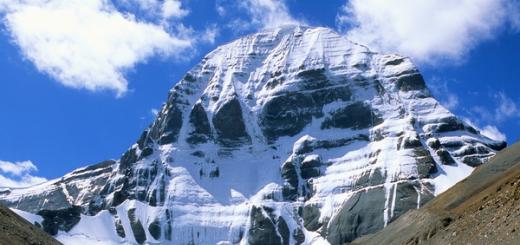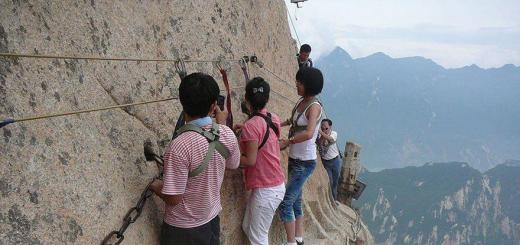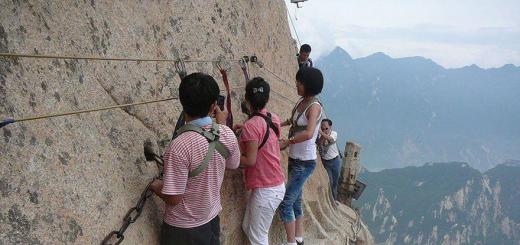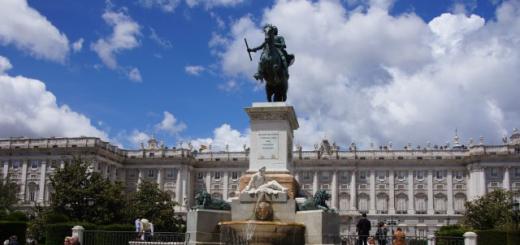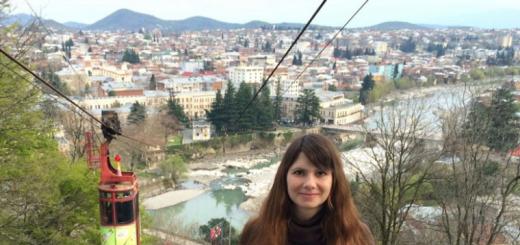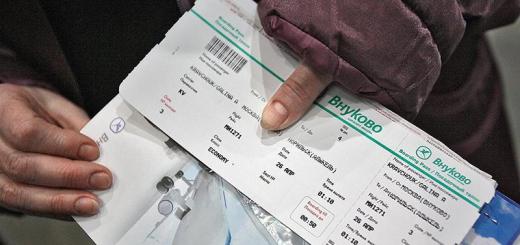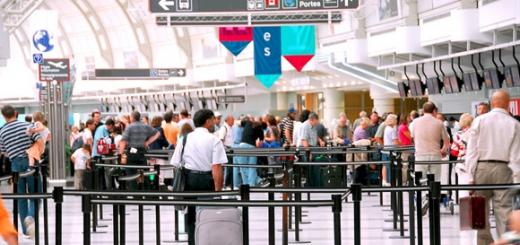If an unusual case happened to you, you saw a strange creature or an incomprehensible phenomenon, you had a unusual dream, you saw in the sky UFOs or became a victim of the abduction of aliens, you can send our story to us and it will be published on our website \u003d\u003d\u003d\u003e .
As soon as they do not call this place in Northern Ireland! Trail Giantov, Bridge gigids, the road of the giants ... It looks like this, as if someone's powerful hands were abandoned in the coast of Kozhei-Coast a lot of hexagonal in the cross section of piles to build huge bridge through the sea.
Looking at this miracle of nature, it is imperative to ask the question: and not the aliens noted on the tip of the Emerald Island?
Stone Fortress
The scale of this mysterious building is striking imagination. If you look at it from above, it really looks like a stone-laid out road, which stretches along the coast of 275 meters and goes to the Atlantic another and a half hundred meters.

Columns sometimes rush up, reaching a height of 12 meters, and sometimes lowered down to 6 meters. Their amount is about 40 thousand. Most of them on the cut has a hexagonal form, but you can also meet four-, five-, seven and nine-infectious columns. The diameter of the columns ranges from 30 to 60 centimeters, they all have smooth vertices.
From above, stone pillars resemble bee honeycomb, they are so tightly pressed to each other. Even a thin knife to cover between them is impossible.


Absolutely all pillars of dark color, also all incredibly solid. According to scientists, they consist mainly of a basalt rich in magnesium and iron, which has a small amount of quartz. Due to this composition of the column is able to successfully resist the destructive effects of winds and the rapid waves of the Atlantic Ocean.
THREE HEROES
The columns form three groups of sites. One group is the so-called big trail - these are the largest poles beginning with the rocky mountains. First, they look like a cluster of huge stone steps, some of which reaches 6 meters in height. Closer to the water, the steps are gradually aligned until they begin to form a coated road, the width of which ranges from 20 to 30 meters.
The second group of stones is the middle and small trails. These trails are located near the big trail and are rather similar about the way, but on the mounds. Since each column has a flat vertex, it is possible to carefully (especially near the water, because they are extremely wet and slippery) go from one post to another.


What and the tourists are used, who for the sake of such an attraction go here for thirty lands.
Finally, the third group of stone gigids lives on the island of Staffa (translated - the island of pillars "). The island is at a distance of 130 meters from the coast and, as it were, continues the main theme of Kozhei Costa. The same, on the island, is the main attraction - a huge Fingeal of the cave.
This is a real lousy world. First, it is still necessary to get to the island, and the sea there is north, troubled, unpredictable. Secondly, the island is deceptive, there are no benefits of civilization. Thirdly, climbing on the island is also not easy, because it consists of high basalt columns similar to the Viking Houses. Height above sea level in the very high point reaches 42 meters.
The entire coast is strongly cut and consists of numerous caves. Only in one place, in the south, the coast is more or less gentle. Fingalova Cave is just there. The height of the cave reaches 30 meters, its length is 75 meters. The acoustics of the cave is unique, the sounds of the surf are given throughout the cave, creating live music, as if in concert HallSo the Cave Fingal is also called a singing cave.


By the way, Staffa Island is considered to be the territory of Scotland. For visitors here built wooden flooring, which you can get around the cave. There is no other option to visit it. Despite the fact that water is splashing at the bottom of the cave, the entrance to the cave is so narrow that the boats do not penetrate there.
"Column" the halls of the island of Staffa and the coast of Kozhei Coast, despite the remoteness of each other, seem to architectural ensemble. It seems that some reasonable creature wanted to lay from the island of Staffa to the coast of Kozhei-Coast a huge stone bridge, but whether his own forces did not calculate, or the weather failed. In general, the mystery of nature.
Shame Spain
Let's go back to the coast of Kozhei-Coast. The columns are located around the rocks, the names of which one more bizarre. For example, two of them were called in honor of the musical instruments: harp (columns from this rock with a curved line descend to the coast) and the organ (direct and high pillars, which are located near it, very much remind of this musical instrument).
There are rocks with such interesting names like a weaving machine of the giant, the coffin of the giant, the guns, the giant's eyes. Here you can look at the giant shoe - a two-meter cobblestone, which really resembles a shoe. It was even estimated that a giant that wore such shoes should have at least 16 meters of growth.


And one more interesting place On the road of giants - chimneys, which several centuries ago frightened already crushed invincible Armada.
It happened for a banal reason. Some pillars of the roads of giants in Ireland are not just towering on the coast, but from the sea are similar to the chick pipes of a huge castle. With him, his Spaniards were confused and fired from the guns enemy territory, then you mean absolutely deserted land.
In short, they applied in full. This battery for the Spaniards ended in deplorable: their ship was broken by the rock, a lot of people died. The episode is spoken by the episode for Spanish history, artifacts in the Olster Museum, which is located in Belfast. They got there, after they were raised from the bottom of the sea.
Stone infant
Irish has worthy legend's attention relative to the origin of the giak trails. One of them was composed by the Celts. In their opinion, I built a gigantic stone road Irish giant - Finn McKul. On her, he wanted to move the sea and fight his long-standing rival, Scottish Giant Benandonner. Reaching the enemy, he saw that Ben is more puzzling, and gave Dera.

But it was too late. Scotman has already managed to notice him, got angry and went into pursuit. Apparently, the Finn came up with fear, as a cunning to take a powerful opponent. He asked his wife to blind him as a child and leave to sleep on the shore.
Seeing such a huge child, Scotman thought: What is the father then? And in fear ran away. And from the powerlessness decided to destroy the path behind him, so that at least to harm the overseas gigan. It is noteworthy that until the XVII century, this legend was considered completely fictional, while the Bishop Derrinsky did not open a reoper of the giants, which after that immediately became an Irish landmark.
Arriving from lava
The road of giants is the only construction of a kind. There are no analogues in the world. There is nothing surprising in the fact that scientists have long discussed how the trail arose. Part of the specialists assured that gigantic poles are actually huge crystals that have long arisen at the bottom of the Ancient Sea. The sea retreated, and the pillars were on the surface.

Others said that the columns are actually a petrified bamboo forest. Alleged in antiquity there was so warm that exotic plants grew. Then the climate changed, it became cold, and the trees of petrified. Alien version was also considered, but only esoterics, scientists rejected it. In the end, everyone agreed that the volcano was to blame.
About 60 million years ago it happened here powerful eruption. Lava broke out through a thick layer of limestone and covered the ground with a layer of 180 meters. After some time, cooling, the lava began to slowly decrease in volume, and thanks to the basalt, hexagonal cracks were formed on its surface. When the inner layers of magma began to cool, these gaps began to deepen and formed hex columns.
This theory was confirmed by a group of scientists from Toronto, which, after the experiments, were able to prove that the more slowly the magma is cooled, the columns are more. The secret of the appearance of such an amazing natural phenomenon, as a trail of giants in Ireland, was revealed ... or not?
Natalia Bykov
Mysterious Northern Ireland pays a lot of miracles. One of them is an amazing giant trail. It seems that the unknown sculptor worked for thousands of years, erecting the road from the stone columns. This unique natural attraction was included in the list. world Heritage UNESCO, and with this decision it is impossible to argue.
In our article.
Tens of thousands of skillfully disheveled basalt columns create a unique landscape. Most of them have six corners, but attentive travelers can find those whose four, five, seven or eight. Still, they really resemble a gigantic road. She envelopes the rocks and goes to the sea, and the differences in the height of the columns from 6 to 12 meters cause the feeling of the ladder casually disheveled giants.

When looking at the giant path, it is impossible to believe that its origin can be explained by the most common natural processes, so there is a legend for romantics and lovers of myths.
In time immemorial, these harsh lands of giants inhabited. The Spoon Warrior Finn Mak Kumalo possessed the moral, and the strong rivals were not frightened. Even on the contrary, they caused a desire to measure forces. It was this opponent who was one-eyed giant who lived over the sea. The distance did not stop the Finn and he decided to build a bridge, and not simple, but a stone. With his sword, the tireless gigid outstretched from the basalt giant columns and drove them into the ground.

Then the folk folklore diverges in opinions. Some say that Finn was tired and fell asleep, and one-eyed warrior himself came to him. Others believe that seeing a mighty opponent, the main character took possession of fear, and he escaped. But in the finals of both options, the Sautle becomes Finn's wife.
As will be found in the legends, she won the one-eyed warrior not by force, but a cunning and a mixture. An intelligent woman washed her husband as a child, and the opponent met with open arms and treats - pellets with pancakes baked in them. He himself sat down to burn her baby and feed it with the same delicacy, only without stuffing. Uninvited guest, I suspected anything, I saw a gigantic infant that I chewed the iron tirelessly, asking for additives, and I realized that with the father of this child to contact for sure. Frightened opponent ran into his head. Having driving his legs destroyed the bridge, and since then the stone columns go under the water.

Origin
In fact, the origin of the giants trails has a scientific explanation. Reasoned this area only at the end of the XVII century, and tourists in large quantities Began to appear here more more than a hundred years. In addition to the unique landscape, visitors like this place and for the fact that their movement is completely unlimited here. Despite the fact that the giants trail is natural Reserve, there are no closed territories.

Curious tourists can detect similar education in other corners of the world, but it is here that their most mass accumulation is. Therefore, it is not surprising that the giants trail interests not only lovers, but also scientists. Several centuries, they tried to come together in a single opinion, putting forward different hypotheses. Some believed that the pillars are crystals that thousands of years grew under the waters of the ancient oceans. Others believed that the columns were nothing but petrified bamboo forest.

Most of the modern scientists stopped at another point of view. According to their versions of millions of years ago eruption ancient volcano It formed an extensive lava plain here, the basis of which was basalt. Gradually solidified it crashed, forming an amazing pattern. If the magma, the cracks are gradually deepened and subsequently formed the right hexagonal columns. So scientists explained the origin of the giak trails. But who knows, maybe on the island in the middle of the cold sea, still sitting alone frightened one-eyed giant ...

sights
The columns of the giants trails form three platforms. The first of them is called a big path and takes its beginning from the rocky mountains. This platform is a monumental staircase, the steps of which are added to the height of six meters. Going down to the sea, the trail becomes more common and similar to the road for gigids. The second platform is the middle and small trails.

The columns from this group are near the main trail, but they are not reminded not the path, but separately standing mounds. Observing precautions, you can examine them, moving from one post to another. The third place is most mysterious and least visited. it uninhabited island Staffa, which is located 130 km from the coast. Its name is translated as the "Still Island". Between the columns island island of its main attraction - a fingel cave, the length of which is about 80 meters.

The beginning of his trail the giants laid along the rocks. Later, people rated their bizarre form and gave them original names. There are musical instruments - harp and organ, and stone accessories, forgotten with giggles - a weaving machine, cannons and even the coffin of the giant. I forgot here an unknown giant and your shoe. This is how one of the cobblestones looks like. The inquisitive visitors have calculated that the owner of this shoe was an increase of at least 16 meters.

A separate pillars of the giak trails are not just towering, but similar from the sea to chick pipes of the harsh northern castle. This involves a curious case in the history of the country. "Invincible Armada" of the Spaniards, approaching the shores, decided to fire a causing threat to the territory and attacked. The loss was incurred by the basalt columns, because there was no castle on the shore. The ship of the Spaniards crashed on the rock, and the army suffered considerable losses in cold waters. Sound treasures were raised from the bottom and are stored in one of their museums of Ireland.
The giants trail in Northern Ireland is a unique spectacle. The harsh northern nature fascinates its unshakable and impassivity. The giant road is impregnated with the spirit of antiquity. Legends are made about her, the tourists of their world do not get tired. This place is definitely worthy of attention.
Address: Northern Ireland, 3 km from Bushmilsa
Coordinates: 55 ° 14 "25.3" N 6 ° 30 "40.3" W
Short description
The village of Bushmils, located in the county of Antrim in Northern Ireland, is known for two attractions. This "Old Bushmills" is the oldest plant in Europe for the production of whiskey and a natural phenomenon called "Road of Giants", or "Giant Trail".
Missed the "Giant Road" was similar to the usual rocky section of the coast, but approaching closer, you can see how tens of thousands of blocks, the arches and columns are a staircase go to sea bumps, reminding the giant trail. A few centuries ago, scientific discussions did not subscribe to the origin of the Giants Road.
Some researchers argued that the Giant trail was huge crystals born at the bottom of the Ancient Sea, and opponents were objected to them: "No, here I exposed a petrified bamboo forest." Today, the scientific world came to a common opinion: on the territory of the county, the nitrime existed the largest lava plain in Europe.

Its foundation was Basalt, erupting from the jar of ancient volcano. Melted basalt hardened and crashed, forming the hexagon prisms of the correct form. Together, these prisms create an amazing pattern, remindingly resembling bee honeycombs. The road of giants has 40 thousand basalt buildings. Stone columns are so tightly adjacent to each other, which might think that the ancient bogatyr was driven into the ground. The dark color of the columns and their exceptional hardness are explained by the fact that they consist of a basalt with a low concentration of quartz, but rich in magnesium and iron. This reduces the speed of their destruction due to the impact of the rapid water of the Atlantic.

The road of giants in Celtic myths
Still in the III century. n. e. Celtsy melted the road of giants in legends. In the old days in Ireland, the Giant lived, named Finn Mak Kumal. Opposite him, a single-eyed evil son of Gods was settled through the strait - Major's Golle.
Finn decided to fight his neighbor, but did not know how to swim and began to build a bridge. 7 days and 7 nights Finn did not close the eye, dragged the huge stone straightened, and at the end I was tired and went home to sleep. Meanwhile, Goll moved along the bridge to Ireland and appeared to Finn.

Finn's wife was not confused: she washed her husband as a baby and licked to a naked, that this is her sleeping son. In addition, a woman treated Golla pancakes, inside of which flat frying pan baked. The enemy broke their teeth about them. And the second cake, a simple wife gave a "baby", and he ate her with appetite. "If the child is so huge and so easily squeezes pancakes, about which I break my teeth, I thought Gol, - how much should his father should be?" I'm not joking, Holly rushed to run, breaking the whole bridge.

Giant Road - Geological Wonders in Stone
In addition to the trails of the giants, on the same plateau you can see the "giants" authority. It consists of 60 high straight columns resembling a huge organ pipe - musical instrument. Another landmark of the Giant Road - "Chimney Pipes" - is associated with the Spanish "invincible Armada". Under the influence of waves and winds on basalt clutches, pillars of unusual form were formed. From the side of the sea, they can be adopted for huge castle chimneys.

Tradition reads: In 1588, the Spaniards from the ship "La Girona", fleeing after the defeat of Armada, began to fir the clogging, deciding that in front of them is the castle of the enemy. The ship "La Giron" crashed on the cliff, having taken with him 1300 human lives. Treasures "La Girona", raised from the seabed, are stored in the Museum of Olster in Belfast.
Giant trail (Giant "s Causeway) in Northern Ireland - unique a natural phenomenon: Interconnected basalt hexagonal columns create amazing landscapes resembling natural bridge. The trail is the result of the activity of ancient volcano; The protrusions were formed when cooled by the lava flow. There is another version of the appearance of a bizarre trail: the road built the hero of Celtic myths Finn Mak Kumal.
The bridge giants really could serve as expensive: columns of different heights (from 6 to 12 meters) seem like stairs, and cracks - the result of the non-accurant planning of the natural trail.
In 1986, bridge giants was listed as a UNESCO World Heritage List.
To visit the track trails, it is worth choosing comfortable clothes and shoes, best - with a rubberized sole.
A trip to the bridge giants is better planned for the period from the end of spring through autumn. In winter, excursions on the tracks are not held. Be careful: the weather in the north of Ireland is rather changeable. With strong wind and in the rain approach the cliff can be dangerous.
Tourist office where you can get detailed information About the bridge giants and buy souvenirs, located at: 44 Causeway Road. When buying a ticket, tourists receive audio guide in Russian (English, French, German, Spanish, Italian, Polish, Japanese and Mandarin are also available).
How to get
Bridge giants are located in the north-east of Northern Ireland, 100 km from Belfast. The bus service connects the Treop of Giakanov and Belfast: travel buses (mainly in the summer), can also be reached by bus 252, the circular route of which passes along the picturesque Antrim coast.
From the end of the spring before the beginning of the autumn, you can get to the pavement giants tourist buses From Bushmils (Bushmills), as well as on the other sights of Northern Ireland. In the summer, minibuses also follow the tourist office.
From Belfast and Londonderry can also be reached on Translink (www.translink.co.uk) trains. Railway stations closest to pavement giants - Portreysh (Portrush) and Colleine (Coleraine), from where the coasts follow the flight buses.
Steam railway connects Bushmils and the giants trail; The station is located 200 meters from the main entrance to the territory of the Natural Park.
Time on the way from Belfast by car - about one and a half hours. Follow the route M2 to the intersection with A26. Turning to the right, follow the turn on the m2. By passing the town of BallyMena, keep moving on A26 to Ballymoney city. Turning to the right, follow the BallyBogy Road before intersection with Priestland Road. Turning right again, continue moving to Causeway Road.
Location
Bridge giants is located in the county of Antrim in B.
Giant trail (Giants Causeway) - The most famous landmark of Northern Ireland.
I have long wanted to see her, and for me, the giak trail has become the strongest impression of the whole.
Imagine a rocky shore, climbing towards the sea, which consists of separate basalt faceted columns, closely pressed to each other. Columns mainly hexagon. Sometimes at the base of the column, almost the right hexagon, sometimes peashed - and not six-, and eight or pentagon.
Columns were formed as a result of a series of volcanic moving, cooling and horizontal compression of lava, which was basalt.

Columns have different heights. Their accumulations form figures, for example, in the form of an organ, frequency, pedestal, stairs. And the most remarkable area is a paved road that goes into the sea and hiding under water.
Actually, this plot is called bridge giants, or a trop of giants.

Trail Giantov (Giants Causeway) and the coast Causeway Coast. In 1986 were listed in the World Heritage List UNESCO.
Legend of the origin of the bridge giants
There is a local legend about the emergence of this pavement. She tells about two giants who wanted to face strength.
One of them is the Irishman Finn Mc Cool (Finn McCool), the other is Scotland Gall. To meet with the opponent, Finn Mak Kul paved through the Irish Sea the road from the pillars driven into the seabed. The laying of the road so tired giant that he fell asleep firmly.
And at that time, the Gol thump went to Ireland along the sea, to fight by force with the opponent. The tricky wife Finn gave her sleeping husband for their crumb-son, and Goll, having wisheding meetings with the father of such a giant, ran away, destroying the road. There was only a small piece of pavement.
Giant trail - how to get
There is a giant trail in the north of Islands Ireland, in a hundred km from, 3 km from the town Bushmils..
How to get:
By car- On the road B147 Causeway Road.
On the public transport "From Belfast by train to Collarane, then by bus 172."
There are excursions for a whole day from Belfast and from Dublin with a visit to the giakan trails. This excursion can be.
Visit Trup Lelikanov
The trail is open from 9 am, and closes depending on the season:
- january, February, November, December - at 17
- march, April, May, June, September, October - at 18
- july, August - in 19. The last entrance is an hour before closing.
The entrance to the territory of the National Park is carried out through Tourist centre. It hosts the museum, toilet, cafe, souvenir shop and cash register.
A ticket to the territory of the Giants Causeway National Park for an adult costs £ 10.50 (a child is half a half).
Along with the ticket, a scheme of routes and audio guide is issued.
There is no good sense in the audiogide. In the scheme, to be honest, too. Everything is intuitive. When I was preparing for the trip, I read that there are several routes along the rocks that are divided by the level of complexity. In fact, the complexity is approximately the same everywhere, and in a couple of hours you will pass all the routes marked on this map.
The logic is as follows: first everyone goes along the bottom path along the sea. There is also a buses, which will be delivered directly to the giakan trails. From the office is about 800 meters. Definitely you need to walk (if you can), because the road is beautiful, and the bus goes quickly - you will not have time to take a picture, nor admire ..
After the giak trail, the road is still some time runs Along the sea, and then the serpentine begins, which takes on the upper path. Next, those who want to go along the cliffs along the top trail: first to the east, then return to the office. The office also has a part of the trail, which leads to the cape. From the cape can be viewed on the tracks of the giants from another angle.
Walk through the National Park
In the morning we left Belfast and after a couple of hours already approached National Park Giant's Causeway.

The weather was cloudy. I read that it often walks rain here, and the photos from the tracks of the giants usually came across rains.
The tourist center entered the rock and is surrounded by the perimeter with dark columns that simulate basalt columns on the giak trails.

Plot - along the sea
Having passed through the tourist center, go down along the rocks along the road.



While still everything looks usually, but there are already weird, as if ordered stones.

Bridge giants
And here she is - Bridge giants. The tops of the columns form the semblance of a paving. In most cases, columns of different levels, but in places they are aligned and merged into a single surface.





The coast consists of numerous faceted columns. The booklet says that here are over 40,000 basalt columns.




Foot - for the scale of columns


Here is such a stitched road

On the side of the bridge looks like this



Trail takes higher


In steep Pastukhov stairs climb the edge of the cliff

and we find yourself on a green meadow with grazing calves.

View of the bridge flowing into the sea

A well visible the trail on which we rose. The trail in the middle of the slope leaves the distance and leads to the so-called organ - a rocky area with a number of high columns. But in our time the passage to the organ was closed, we saw it only on top.

Top trail

then among the heather fields


that is approaching the edge of the cliff.




Hence the bridge giants looks sharp cape. The green "dinosaur head" looks out of the water

From the species captures the spirit, and I want to go farther and further, following the bends, descents and lifts of the coastline. I was experiencing such an inspiration in Normandy, on. By the way, the weather was walking.

"Organ pipes"







Heather and bells among grass







Unfortunately, at some point I had to turn back. Returning to the giak trails, we looked at her from above. The people were significantly added.


Bus to the pavement giants. Right at the top - Hotel Causeway Hotel. In the distance (left) is visible big sand beach - Rocks have come to no.

In conclusion, we still walked on this plateau

There are a picnic shops. So, if you are squandered sandwiches, you can eat here and eat.

This ended our walk. The museum, cafes and souvenirs did not remain left. I wanted to maximize the time for a walk along the rocks. And at 14 o'clock we had a ferry in Scotland.
So, if fate brings you to Northern Ireland, try to get to this unique coast. And maybe even overnight.
Attractions next to the trop of giants
About the tracks of the Giant, there is a Causeway Hotel near the news center.
If you arrived with overnight, you can go all Causeway Coast Way.(33 miles) - beautiful route along the coast. Also nearby are (15 km east of the TRADOPADES Velikanov) is one more attraction - Rope Bridge CARRICK-A-REDE ROPE BRIDGE, stretched between two rocks above the strait. The bridge serves as a good addition to the trop of the giants: as a rule, these two sights look together.
You can also go to the ruins dunluce Castle Castlebuilt on a rock. It is 8 km west of the Trup of Giakanov. The castle served as a prototype of Caer Castle Parallel in the "Chronicles of Narnia" and Pike in the "Game of Thrones".
Universal SIM card, one for all countries -
Railway and bus tickets in Europe - and
Bicycle rental, scooters, quadro- and motorcycles -
I use cards on trips Tinkoff Black
If you want to receive messages about the appearance on the site of new stories, you can subscribe.

